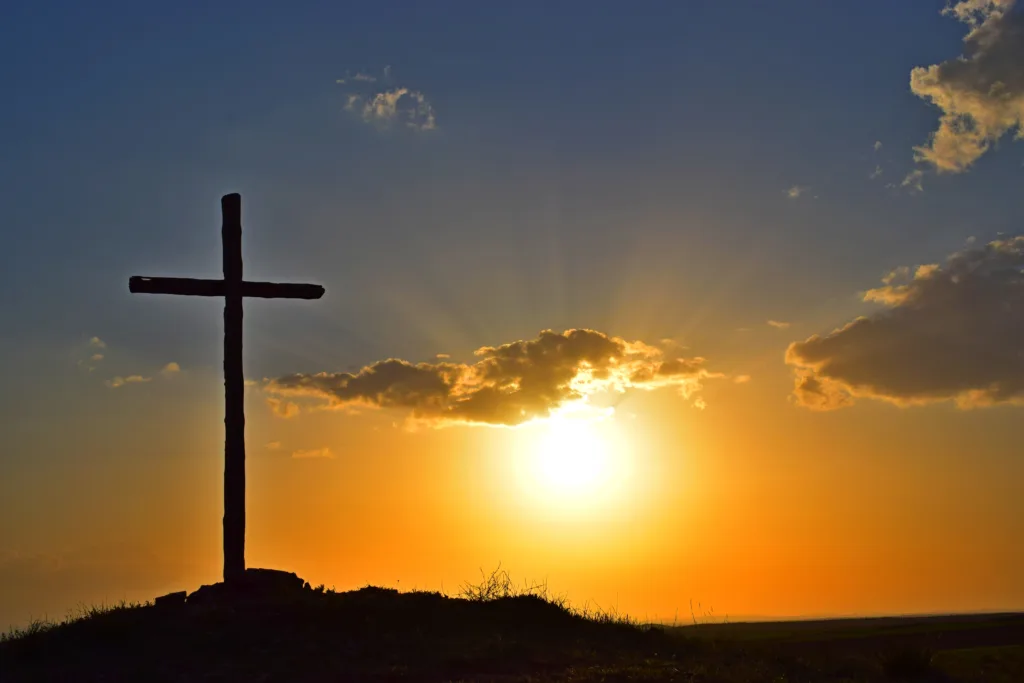Easter is one of the most important Christian holidays, celebrating the resurrection of Jesus Christ. While it is typically associated with the arrival of spring and warmer weather, the date of Easter can vary widely from year to year, falling anywhere between March 22 and April 25. But what happens when Easter falls in March?
First, let’s take a closer look at how the date of Easter is determined. The holiday is set to coincide with the first Sunday after the Paschal Full Moon, which is the first full moon after the vernal equinox. This means that Easter can fall on a wide range of dates, depending on the timing of the full moon and the equinox.
When Easter falls in March, it is considered an early Easter. This occurs when the Paschal Full Moon falls on or very close to the vernal equinox, which typically occurs on March 20 or 21. The last time Easter fell on March 22 was in 1818, and it won’t happen aain until 2285. So, an early Easter is a rare occurrence indeed.
One of the most notable things about an early Easter is the impact it can have on the weather. Since Easter is often associated with the arrival of spring, an early Easter can mean that spring has not yet fully arrived in many parts of the world. This can lead to colder temperatures and even snow in some areas, making it a very different experience from the warmer, sunnier Easter celebrations that are more typical in late April.
Another factor to consider is how an early Easter can impact the traditions and celebrations associated with the holiday. For example, many families have Easter egg hunts outdoors, but this may not be possible if the weather is too cold or snowy. Similarly, many people associate Easter with the arrival of spring flowers and plants, but an early Easter may mean that these have not yet bloomed.
Despite these potential challenges, an early Easter can also bring its own unique joys and opportunities. For example, it may be a chance to celebrate the holiday in a new and different way, perhaps by embracing the colder weather and incorporating winter-themed decorations and activities into the festivities.
While an early Easter is a rare occurrence, it can have a significant impact on the weather and traditions associated with the holiday. Whether you’re celebrating an early Easter or a more typical one, the most important thing is to come together with family and friends to celebrate the message of hope and renewal that Easter represents.
Can Easter Occur in March?
It is possible for Easter to be in March. In fact, Easter can fall on any Sunday between March 22 and April 25, depending on the date of the Paschal Full Moon. The Paschal Full Moon is determined by the Metonic cycle, a recurring sequence of 19 dates ranging from March 21 to April 18. Therefore, if the Paschal Full Moon falls on a date in late March, Easter will occur in March. However, if the Paschal Full Moon falls on a date in April, Easter will occur in April.

Easter Occurrences in March
Easter is a moveable feast, which means that its date is not fixed and can vary every year. However, it is always celebrated on the first Sunday following the first full moon aftr the vernal equinox, which occurs on March 21st. This means that Easter can occur in March, but not every year. In fact, Easter falls on a March date about 25% of the time. To be more precise, Easter falls on March 22nd to 31st about 35% of the time, and on March 21st or earlier only about 7% of the time. Therefore, we can say that Easter occurs in March approximately one out of every four years.
The Significance of Easter Being in March
Easter is not alays in March, its date varies every year. The reason behind this variation is that the date of Easter is determined by the moon. Easter is celebrated on the first Sunday after the Paschal Full Moon, which is the first full moon that occurs on or after the vernal equinox. The vernal equinox, also known as the spring equinox, is the day when day and night are approximately equal in length, and it usually falls on March 20 or 21. Therefore, depending on the date of the Paschal Full Moon and the vernal equinox, Easter can fall anywhere between March 22 and April 25.
Easter’s Occurrence in March and May
Easter has been in March and May before. Easter is celebrated on the first Sunday following the first full moon after the vernal equinox, which can fall aywhere from March 22 to April 25. So, it is possible for Easter to be in March, but it is rare. The last time Easter was celebrated on March 22 was in 1818, and the next time will be in 2285. Similarly, Easter can also fall in May. The latest possible date for Easter is April 25, and if that date is a Sunday, then Easter is celebrated on that day. However, if April 25 is a Saturday, then the next day, Sunday, April 26, is considered Easter. Therefore, Easter can also fall on May 1, 2 or 3. The last time Easter fell on May 3 was in 1943, and it will again in 2038.
The Reason Behind the Change of Easter Date from March to April
Easter is a moveable feast because its date is not fixed, and it changes every year. The reason behind the shift of Easter from March to April is because the date is based on the lunar calendar, which is diffeent from the standard solar calendar. The lunar calendar is based on the phases of the moon, and the solar calendar is based on the Earth’s orbit around the sun. Easter falls on the first Sunday after the Paschal Full Moon, which is the first full moon that occurs after the vernal equinox. The vernal equinox is the first day of spring in the Northern Hemisphere. The date of the vernal equinox is fixed, but the date of the Paschal Full Moon can vary by up to two days. Therefore, Easter can fall anywhere between March 22 and April 25, depending on the date of the Paschal Full Moon.

Why Does Easter Move Between March and April?
Easter is a holiday that commemorates the resurrection of Jesus Christ and its date varies each year. The reason behind this is due to the fact that Easter’s date is set to coincide with the first Sunday after the Paschal Full Moon, which is the first full moon that occurs after the vernal equinox. The vernal equinox is the moment when the sun is directly above the equator, which usually occurs on March 20th or 21st. Therefore, Easter can fall anywhere beteen March 22nd and April 25th. This system was established during the Council of Nicaea in 325 AD and is based on the lunar calendar. This is why Easter changes from March to April each year.
Can Easter Occur in Both March and April?
Easter can be in both March and April. In fact, Easter is considered a “moveable feast,” meaning its date changes every year. The date of Easter is determined by the first full moon after the vernal equinox, which is why it can fall anywhere between March 22 and April 25. This also means that the date of Easter can vary greatly from year to year, with some years having an early Easter in late March and others having a later Easter in mid to late April. So, to answer your question, Easter can indeed be in both March and April.
Easter: March or April?
Easter is a moveable feast, which means that its date changes every year. It is determined by the lunar calendar and falls on the first Sunday following the first full moon that occurs on or after the vernal equinox. As a result, Easter can fall anytime between March 22 and April 25.
In the last 500 years, from 1600 to 2099 AD, Easter has been celebrated most often on two dates – March 31 and April 16, both of which occurred 22 times each. However, since Easter falls withn a range of dates, it is not strictly accurate to say that it falls more often in March or April. It is more accurate to say that it falls within a range of dates that span both months. This year, Easter falls on April 4.
Easter’s Date: Is It Always in March or April?
Easter does not always fall in March or April, but rather occurs within a specific period of time. In the Gregorian calendar, which is the calendar used by most countries in the world, Easter falls between March 22 and April 25 each year. The exact date of Easter changes from year to year and is determined by a complex set of rules based on the lunar calendar and the equinox. Therefore, it is possible for Easter to fall in either March or April, depending on the year.

The Rarest Date for Easter
The rarest date for Easter in the Gregorian calendar is March 22, occurring once in every 210 years. This is followed by April 25, which occurs once every 133 years, and March 23, occurring once in every 105 years. It’s worth noting that Easter is calculated based on the lunar calendar, specifically the first full moon after the vernal equinox, which can vary from year to year. This variability is why Easter can occur on different dates each year, and why some dates are rarer than others.
Why Is Easter Celebrated After March 21?
Easter Sunday is a moveable feast celebrated by Christians worldwide to commemorate the resurrection of Jesus Christ. The date of Easter Sunday varies every year, falling on a different date each year. However, Easter Sunday is never celebrated until after March 21, and there’s a reason for that. The date of Easter is determined by the lunar calendar, and it’s closely related to the spring equinox.
The spring equinox is the moment when the sun is directly above the equator, and it typically occurs on March 20 or 21. As a result, the first full moon that follows the equinox is used to calculate the date of Easter. Specifically, Easter falls on the first Sunday after the first full moon following the spring equinox.
Therefore, since the spring equinox is always taken to be March 21, Easter Sunday can never be celebrated before this date. In 2022, the first full moon after March 21 is on April 16, which is why Easter Sunday is celebrated on April 17. These rules mean that the earliest possible date for Easter Sunday is March 22, which last happened in 1818.
In essence, the date for Easter Sunday is determined by the complex interplay beteen the lunar calendar and the spring equinox. Therefore, Easter will never fall before March 21, marking an important synchronization between the Christian calendar and the natural world.
Why Does Easter Have Different Dates Each Year?
Easter is celebrated on different dates each year becaue it is determined by a calculation known as computus. The date of Easter is based on the lunar calendar, which is different from the solar calendar used in western societies. The date of Easter is calculated as the first Sunday after the Paschal full moon, which is the first full moon on or after 21 March. This is a fixed approximation of the March equinox, which is the moment when day and night are of equal length and marks the beginning of spring in the northern hemisphere. The lunar calendar is based on the cycles of the moon, which is why the date of Easter changes each year. The computus calculation can be quite complex, involving a combination of astronomical data and religious traditions. It is important to note that different Christian denominations may use slightly different methods to calculate the date of Easter, which can also contribute to variations in the date.
Easter in March
Easter fell in March on March 27, 2016. It is important to note that the date of Easter changes each year and can fall between March 22 and April 25, depending on the lunar calendar. The last time Easter fell on the earliest possible date of March 22 was in 1818, and the next time it will occur on this date will be in 2285.

Conclusion
Easter in March is a rare occurrence that happens only a few times every century. The date of Easter is determined by the Paschal Full Moon, which can fall on a sequence of 19 dates between March 21 and April 18. While Easter can fall anywhere within that range, it is very unusual for it to occur as early as March 22. The last time this happened was in 1818, and it won’t happen again until 2285. Despite its infrequency, Easter in March remains a significant event for Christians around the world, as it marks the resurrection of Jesus Christ and the triumph of hope and renewal over darkness and despair. Whether celebrated in March or April, Easter is a time for reflection, renewal, and rejoicing, reminding us all of the power of faith, love, and forgiveness in our lives.
